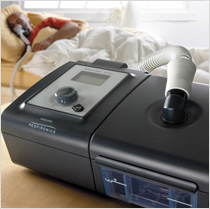*Brick: Machine without efficacy data— as in “about as useful in treating OSA as a brick”.
Unfortunately, too many people read “What you need to know BEFORE you meet your DME” after a DME has stuck them with a brick. So now what?
1. How long have you had that brick?
0 to 1 month: You have a good chance of getting a data capable machine, particularly if it’s a rental and not a purchase. NOTE: If you are on Traditional Medicare (Parts A and B, NOT Medicare C/Advantage), it is most definitely a rental. If you are not on Traditional Medicare or if you have any other insurance, you must call your insurance company to confirm if your machine is a rental or not, and how long the rental period lasts.
If your machine was entirely a purchase, you may find it difficult to get the brick replaced with a data-capable machine. It’s worth a try, but expect it to be difficult and there is no guarantee of success (nothing on this blog constitutes any guarantee, anyway).
1 month – 3 months: Chances of getting your brick swapped out for a data-capable machine are fair at best. It still may be worth a try, however.
After 3 months: Your chances of getting your brick swapped out for a data-capable machine are almost nil. Some very few people have succeeded, after a LOT of difficulty. You might consider either buying what you want out of pocket from an online supplier (much cheaper than a brick and mortar DME!) or look for a used machine via Secondwind.com, craigslist, cpapauction.com, etc. This will save you a lot of banging your head against a wall!
2. Be sure to confirm that your insurance will pay for ANY E0601 machine, whether it’s data capable or not, CPAP or auto. The very first thing the DME is going to tell you if you tell them you want a data capable machine is “your insurance won’t cover that”. 99% of the time this is NOT true, but you need to check before you approach the DME, or—like any good used car salesman—they will convince you otherwise. Even better if you can get your DME confirmation in writing (this is rarely possible). HINT: Traditional Medicare always covers any E0601 machine!
3. The next lie the DME will tell you is that your prescription from the doctor must specify data capable and/or auto. This is not really true, BUT, if you walk in there with a prescription specifying “patient access to AHI and leak data” and/or “auto adjusting-cpap” you will totally poke a hole in this argument before it happens. Without a specific prescription, you must fight an uphill battle.
Note that sometimes you can’t get this written in your prescription from a sleep doctor or clinic, because they don’t necessarily WANT you to have access to your data or the ability to use the machine in auto mode. Whether or not you want to stick with that sleep doctor/clinic is another issue, but meanwhile, you should know that you can get the prescription from ANY doctor, or even a dentist. So if your sleep doctor refuses but you have a good PCP or dentist, relative, or friend with M.D. after their name, ask them to write the prescription exactly as you want it.
4. Choose your make and model. Once you know your insurance will cover more than a brick and you have the prescription in hand, take the time BEFORE you approach the DME again to decide exactly what you want. This time it is definitely for keeps—no chance of coming back yet again if you change your mind and want the fancier E0601 machine, so make sure you decide exactly what you want—you’re going to be stuck with it for at least FIVE years.
Data Capable: The following machines are data capable in the ResMed and Philips Respironics Lines. If you want another brand, do your own homework!
ResMed: Ask for the ResMed Elite or ResMed Autoset. (AVOID the Escape or Escape Auto—they are not data capable!) The latest model of ResMed is S9. S8’s and previous models are discontinued.
Philips Respironics: Ask for the System One Pro with C-flex Plus or System One Auto with A-Flex. Series M machines have been discontinued. (AVOID the System One CPAP Plus with C-flex—not data capable). Note how confusing the names are as the Pro also has “plus” in the name! To further confuse you, all the Philips Respironics machines are marked “Remstar” but that name isn’t really used anymore.
Medicare and many other insurers require an outright purchase of the humidifier. The blower is a rental, but the humidifier is a purchase. So if you are stuck with a brick, consider getting the same manufacturer and production series so that you can use the humidifier you already bought with your new blower, i.e. if you got stuck with a ResMed S9 Escape, get a ResMed S9 Elite or Auto, rather than a Philips machine or an S8. Otherwise you may be stuck with paying a few hundred out of pocket for a new humidifier! (If you have to get a different humidifier, buy it online to save money!)
5. Now start shopping. Call around to other in network DME’s (unless your insurer doesn’t care what DME provider you use) and find out if they will provide you with exactly the machine you want, on your insurance, and given that a portion of the rental period (if there is one) has already been used (hopefully less than one month). Once you find a DME who will supply what you want, you will have a lot more leverage with your current DME, the brick provider.
6. Call your current DME and explain that you are not happy with the machine they gave you and you want it replaced with the machine you have chosen. Be prepared to listen to a litany of lies* about why you can’t have such a machine:
a. No machines have efficacy data.
b. Your brick has data (yes, but not efficacy data).
c. Patients are not allowed to access their own data—it’s illegal.
d. There is no software available for patients to monitor their own data.
e. Your insurance doesn’t cover a data-capable machine.
f. We don’t carry that machine.
g. We (or your doctor) can download your card for you (so what?—you already know if you’re compliant or not!).
h. You have to pay more for a better machine (in most cases you do NOT. Make sure you’ve read “Don’t Pay that Upcharge” before you talk to your DME about swapping the brick).
*Note: Your DME may not be deliberately lying—he or she may actually believe some of these stupid things are true. But you know better, because you have done your homework!
Before going on to the next step, take a deep breath. It’s understandable to feel angry, frustrated, or defeated by the way you will be treated by your DME. But if you stay calm, polite, and firm, you’re much more likely to succeed. If you’re a wimp like me, don’t let them run all over you and make you feel like you don’t know what you’re talking about—on the other hand, getting angry and nasty will not help your cause.
7. Calmly, politely, but firmly tell your DME which machine you want and that if that DME is not willing/able to provide it, you have a firm commitment from XYZ DME to provide you with exactly what you want (with your current prescription and insurance). If they would like to keep you as a customer, then they need to provide what you are asking for, or you will return the brick and take your business to the other DME.
NOTE: do NOT make this threat without a firm commitment from the other DME to provide what you want—the only thing worse than a brick is NO CPAP. If you cannot find another DME to commit to supplying exactly what you want, you cannot risk playing hardball with the brick supplier unless you are prepared to buy a data capable machine at your own expense. You can still ask the brick supplier to replace it with a better machine, but you won’t have the same amount of leverage.
MUST the DME swap out your brick for a data capable machine? No, not really. They gave you a brand new E0601 machine which you accepted, and if they swap it out for you they’ll be taking back a used machine for a brand new and more expensive machine—for no additional money. This hurts their profit margin. And most people (who aren’t as smart as you) accept a brick and never complain. So why should you be special?
Just keep in mind this is YOUR therapy, and you have a right to a machine that will support your knowledge and understanding of your therapy to make it the best it can possibly be. If you had understood all of this before you accepted the brick, you would NOT have accepted the brick in the first place.
By giving people bricks to maximize their profits, the DME is doing a disservice to its customers (some DME’s understand this and will not issue compliance-only machines). And the DME will still make a profit no matter which machine you get, albeit perhaps a smaller one. So you don’t have to feel too sorry for them. If they are unhappy with the amount your insurer reimburses them for machines, that’s something they need to take up with the insurer, not with you. If they are nice enough to help you with this, they may get a lifetime of repeat business from you that will more than make up for the slight decrease in profit they will suffer initially.
8. Be prepared for the next barrage of dissuasive techniques like:
a. “I have to check with management”, corporate, etc. (Your response should be—“It’s OK to check with the manager, but if your company can’t supply it, XYZ will.” And set a SHORT deadline for a response—24 to 48 hours at most).
b. We don’t have that in stock and it will take X amount of time (often, if you push, they “just so happen” to manage to locate one on the shelf in the stock room).
c. You’ll have to pay X amount more (in most cases, this practice of “balance billing” is illegal or violates their contract with your insurance company).
d. Beware the “bait and switch”—you arrive to pick up your new machine to find it’s not what you requested—i.e. they “didn’t notice” the ResMed Auto was an Escape Auto or they give you an older, discontinued model.
e. They ask you to sign a form on return that says you are “refusing therapy”. Don’t sign it—if they insist in order to credit your return, be sure to write that you are NOT refusing therapy, only rejecting that particular model of machine. Make sure you know exactly what is in anything they ask you to sign. Don’t rely on their verbal assurances of what it is.
f. Be sure to keep copies of any paperwork and WATCH your billing to make sure they don’t continue to charge your insurer for the returned machine if you switch DME’s or two machines if you stay with that DME.
9. Follow-up. Congratulate yourself on being an educated person who took matters into your own hands to ensure your health. Think of the newbies who don’t know how to do this, and who may even give up on CPAP all together because they cannot figure out why the therapy is uncomfortable or not working with their data-less machines. If you leave a DME because it won’t replace the brick, consider writing a letter (writing is always better) to the referring doctor or sleep clinic and copying it to the manager of the DME telling them exactly why they lost your business and why the doctor/sleep center should reconsider referring any other patients there. Remember, you should be brief, factual, and polite, so that your letter doesn’t end up in the round file as that of some raving, sleep-deprived lunatic.
It’s also a nice thing to write a letter thanking or praising a DME who bends over backwards to replace your machine so that you are satisfied with their service. That will go a long way in getting them to do it again for the next guy.
Keep in mind, too, that if you have the financial resources, you can always bypass this rigmarole and buy your own machine, or keep the brick as a backup and buy what you want for your main machine (NOTE: if you intend to keep the brick, make sure to keep using the brick until your compliance requirements are met, if they haven’t been already). Not everyone has the financial wherewithal to buy their own machine, and you’ve already paid into your insurance, but sometimes the aggravation of dealing with the DME in your sleep-deprived state is just not worth it.
Oops, there’s the wimp in me coming you. YOU should be polite but firm, and hopefully you will succeed. Good luck, and be sure to let us know in the comments how it goes for you.
 model name for ResMed Machines
model name for ResMed Machines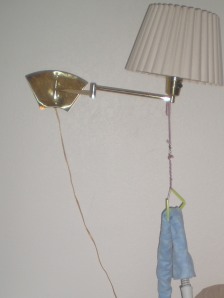
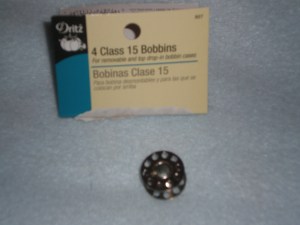
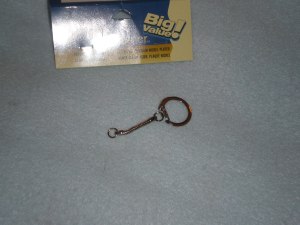
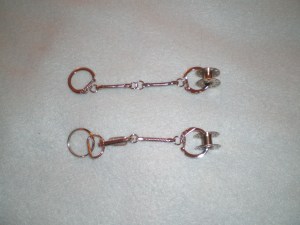
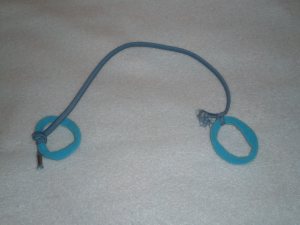
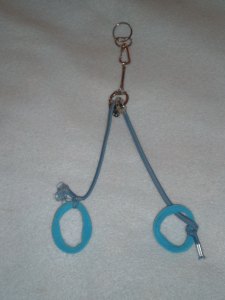

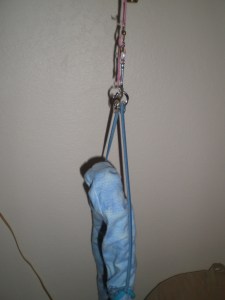
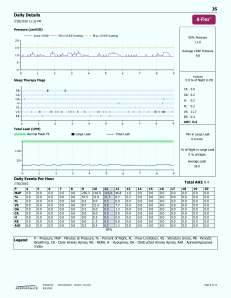




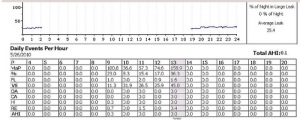

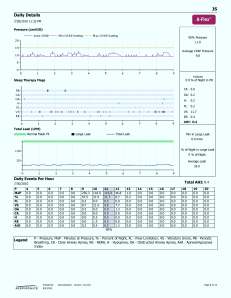
 The bear snores.
The bear snores. 


